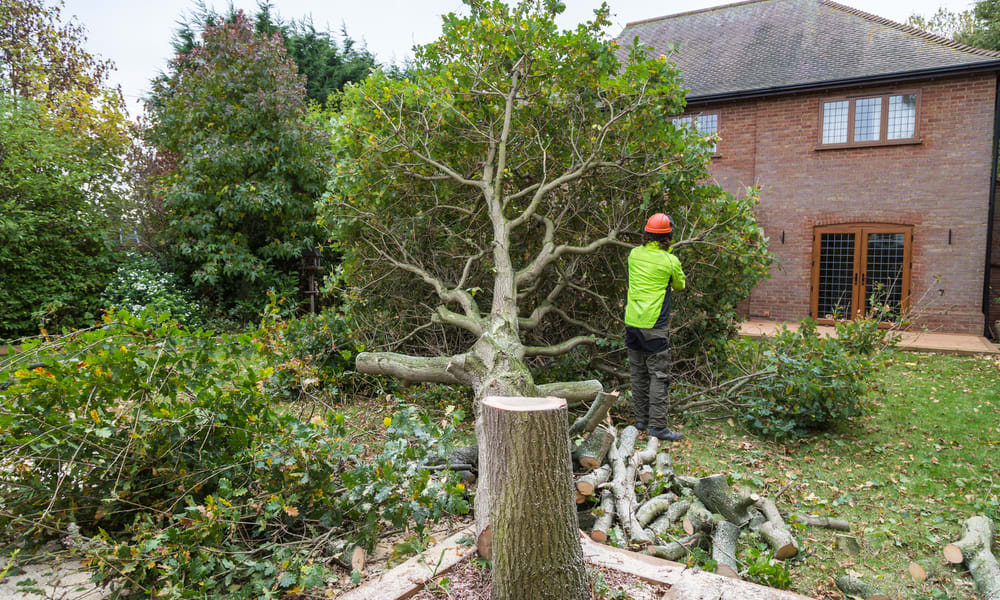Emergency Tree Removal Services Explained: From Storm Damage to Safety
Learn how emergency tree removal near you work and when to call for 24 - hour tree cutting service. Discover how local tree experts handle storm damage, ensure safety, and provide affordable solutions for urgent tree problems in your local area today.

When to Call for Emergency Tree Removal
Emergency tree removal becomes necessary when trees create imminent danger to people or property. Several scenarios warrant immediate professional attention rather than waiting for regular service appointments. A tree that has fallen onto a house, garage, or vehicle requires urgent removal to prevent further structural damage and allow for repairs to begin. Trees leaning precariously after storms, especially those near structures or power lines, present significant hazards that need immediate assessment. Cracked or split trunks following lightning strikes or wind damage often indicate structural failure that could lead to sudden collapse without warning.
Other situations requiring emergency response include trees blocking driveways, roads, or emergency access points, and trees that have become entangled with utility lines, which present both safety and service disruption concerns. Professional emergency tree services are equipped to handle these dangerous situations safely while coordinating with utility companies when necessary.
How 24-Hour Tree Cutting Services Operate
Emergency tree removal companies maintain round-the-clock availability because tree emergencies don’t follow business hours. These services typically maintain crews on standby who can respond quickly to urgent situations, even during nights, weekends, and holidays. The process usually begins with an emergency assessment call where technicians gather information about the situation to determine the appropriate equipment and team size needed.
When crews arrive on-site, they conduct a rapid risk assessment to identify the safest removal approach. This often involves evaluating structural damage, checking for power line involvement, and determining whether specialized equipment is required. Unlike scheduled tree work, emergency removals focus primarily on eliminating immediate dangers rather than aesthetic considerations. Crews work systematically to secure the area, remove the hazardous tree components, and make the situation safe, with cleanup and more thorough removal of debris sometimes scheduled as a follow-up service.
Storm Damage Tree Removal Techniques
Professional arborists employ specialized techniques when dealing with storm-damaged trees. The complexity of these situations often requires advanced equipment and methodologies that differ from routine tree work. For trees that have already fallen, crews typically use a sectional dismantling approach, cutting the tree into manageable pieces while carefully addressing pressure points where the wood is under tension to prevent unexpected movements.
When handling partially fallen or leaning trees, professionals use rigging systems with ropes, pulleys, and sometimes cranes to control the direction of fall and prevent additional property damage. Trees damaged by lightning require careful inspection for internal damage that may not be immediately visible but could compromise structural integrity. Similarly, trees affected by saturated soil conditions often have compromised root systems that complicate removal and require specialized stabilization techniques during the process.
Professionals prioritize safety above all else during storm damage removal, sometimes implementing temporary measures like cabling or bracing if complete removal cannot be accomplished immediately due to conditions or resource limitations.
Finding Emergency Tree Removal Services in Your Area
When facing a tree emergency, knowing how to quickly locate reliable service providers is essential. Most reputable emergency tree service companies advertise their 24-hour availability prominently on their websites and in local directories. Many maintain dedicated emergency hotlines separate from their regular business lines. Before emergencies occur, homeowners should research and save contact information for several local providers with explicit emergency response capabilities.
When contacting services during an emergency, be prepared to describe the situation in detail, including the tree’s location relative to structures, whether power lines are involved, and any immediate dangers. Reputable companies will ask specific questions to assess the urgency of the situation and provide realistic timeframes for response. During widespread storm events, emergency services typically prioritize cases based on severity of risk rather than first-come-first-served, addressing situations with immediate safety concerns before those that are merely inconvenient.
Understanding Emergency Tree Removal Costs
Emergency tree removal typically carries premium pricing compared to scheduled services due to the immediate response required, after-hours labor, hazardous working conditions, and specialized equipment often needed. Several factors influence the final cost, including the tree’s size and location, extent of damage, complexity of the removal, equipment required, and whether utility lines are involved.
| Service Type | Average Cost Range | Factors Affecting Cost |
|---|---|---|
| Standard Emergency Removal (Medium Tree) | $500-$1,500 | Size, location, accessibility |
| Large/Hazardous Tree Emergency Removal | $1,000-$5,000+ | Size, hazards, equipment needed |
| Emergency Crane-Assisted Removal | $1,500-$10,000+ | Crane costs, location difficulty, size |
| After-Hours Emergency Response | Additional 25-50% | Time of day, holiday/weekend rates |
| Storm Cleanup (Beyond Tree Removal) | $300-$1,500 | Volume of debris, property size |
Prices, rates, or cost estimates mentioned in this article are based on the latest available information but may change over time. Independent research is advised before making financial decisions.
Most insurance policies cover emergency tree removal if the tree has damaged insured structures like homes or garages. However, they typically won’t cover removal if the tree has simply fallen in the yard without damaging property. It’s advisable to document the damage thoroughly with photographs before removal begins and to contact your insurance company promptly for guidance on claim procedures.
Safety Considerations During Emergency Tree Situations
While waiting for professional emergency services to arrive, homeowners should take certain precautions to ensure safety. Evacuate and avoid areas where damaged trees or branches could fall, and establish a safety perimeter to prevent others from entering dangerous zones. If downed trees have affected power lines, always assume the lines are energized and stay at least 30 feet away, contacting the utility company immediately.
Never attempt to remove large or structurally compromised trees yourself, especially during ongoing severe weather. Amateur chainsaw use during emergency situations frequently leads to serious injuries. Similarly, avoid climbing on or cutting fallen trees that are under tension or supporting other debris, as they can shift unpredictably when cut. While waiting for professionals, focus instead on documenting damage for insurance purposes and securing alternate accommodations if necessary rather than attempting DIY solutions that could compound the emergency.
When professionals arrive, maintain a safe distance from work zones and follow all safety instructions provided by the crew. Their expertise in managing these hazardous situations is essential for restoring safety with minimal additional risk.




